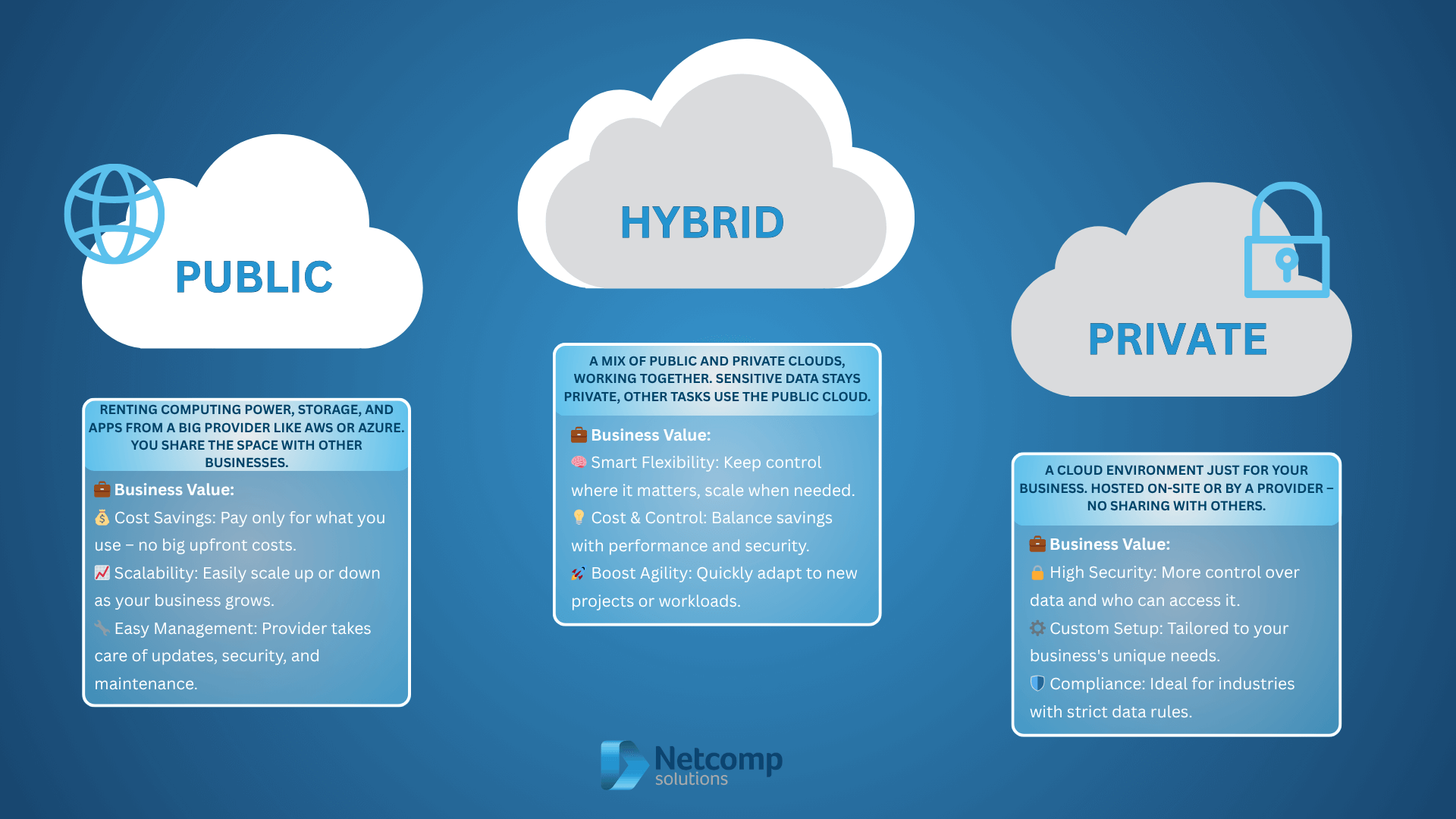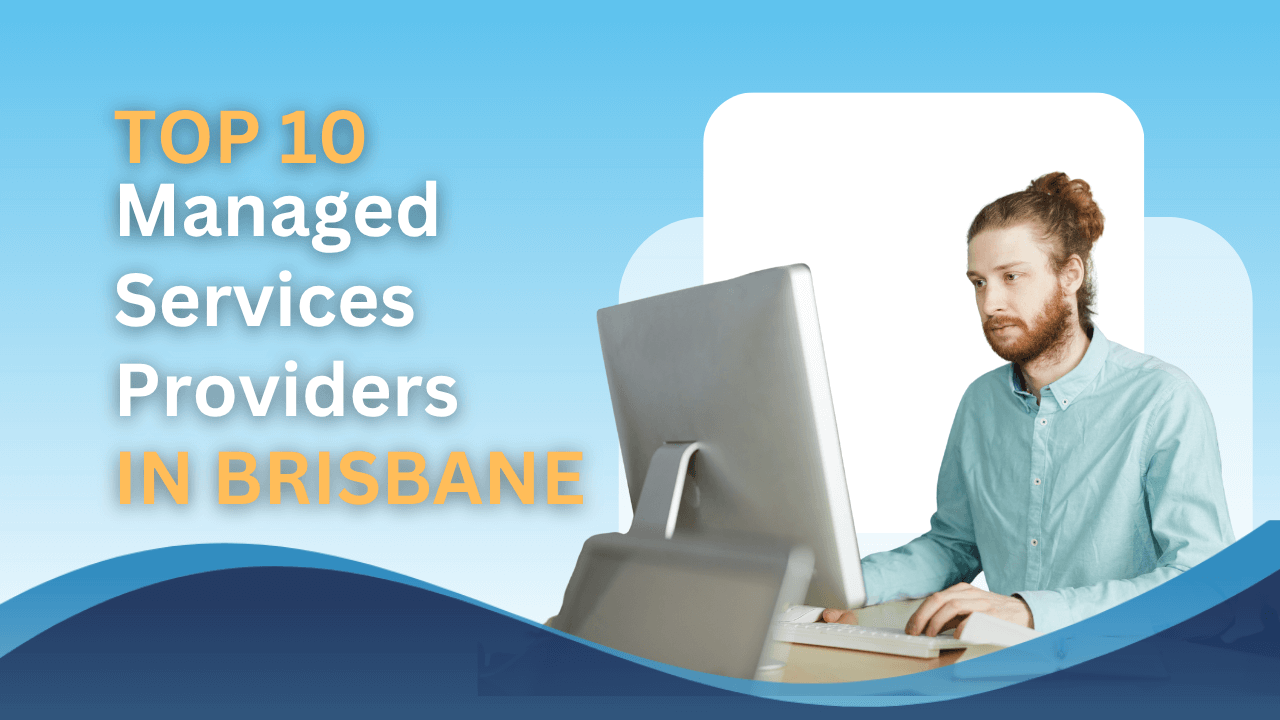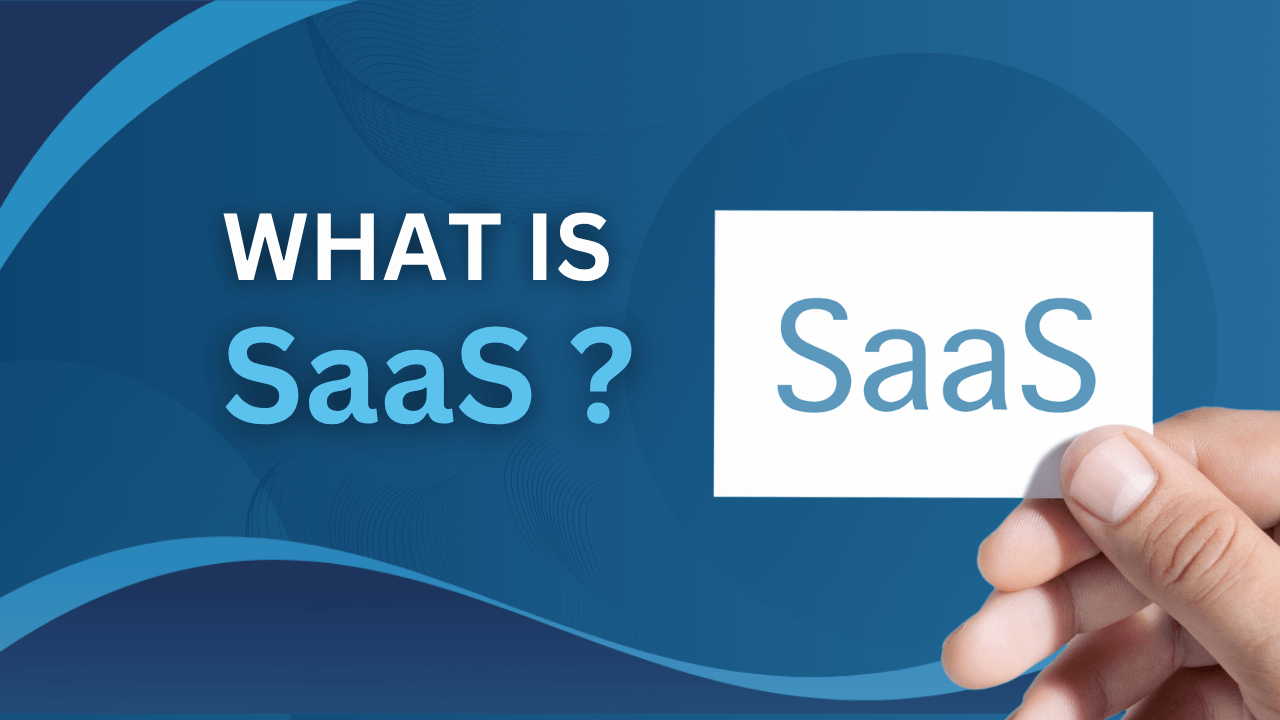Is your trusty old server humming away in the corner, feeling more like a ticking time bomb than a reliable workhorse? Perhaps you’re constantly battling rising maintenance costs, worrying about security threats, or simply feeling limited by your current setup. Indeed, for many Australian small businesses, the physical server that once served so well is fast becoming a bottleneck, hindering growth and draining resources. Moreover, the thought of a sudden hardware failure or a cyber-attack can keep any business owner up at night, knowing their vital data is at risk.
However, there’s a powerful and increasingly popular alternative that’s transforming how businesses operate across Australia: the cloud. This isn’t just a buzzword; conversely, it’s a transformative solution that offers incredible flexibility, significant cost savings, and genuinely enhanced security for your valuable business data. Ultimately, moving to the cloud means your business can be more agile, more secure, and ready for whatever the future holds.
Therefore, our goal with this guide is simple: to help you, the Australian small business owner, find the best cloud platform that perfectly fits your unique needs. We understand that the world of cloud computing can seem daunting, filled with unfamiliar terms and endless options. Nevertheless, we’re here to simplify this seemingly complex topic, cutting through the noise to provide you with clear, actionable insights.

So, what can you expect? First, we’ll make sense of cloud-related terms that often sound way too similar. Next, we’ll explore your cloud migration options, from keeping part of your system local to going fully cloud-based. After that, we’ll compare the top cloud platforms used by Australian businesses and explain how to pick the right one for you. Finally, we’ll answer common questions that most business owners have before making the leap. Let’s get started!
Cloud Jargon Demystified: Understanding the Lingo
Stepping into the world of cloud computing often feels like learning a new language, with terms like “cloud platform,” “cloud solution,” and “cloud provider” thrown around. However, you don’t need a computer science degree to understand them. In fact, many of these concepts are quite simple once you connect them to everyday experiences. Let’s break down the jargon into plain English.
What is Cloud Computing?
First and foremost, let’s talk about Cloud Computing itself. Essentially, imagine it as renting computing resources – things like storage space for your files, the processing power needed to run your software, or even the actual software itself – over the internet, rather than owning all the expensive equipment yourself. Consequently, think of it like electricity: you don’t build your own power plant; instead, you just plug in your appliances and pay for the power you use. So cloud computing works in much the same way, offering you the power you need without the burden of ownership.
The Core Cloud Terms Explained:
Now, let’s look at the specific terms you’ll encounter on your cloud journey. Firstly, imagine you’re building a home. You need land, a builder, rooms, and storage space. Similarly, cloud services work the same way, just in the digital world.
Cloud Platform / Cloud Computing Platform:
Think of this as the land and infrastructure where your digital house is built. It’s the powerful engine room that keeps everything running in the background. For example, platforms like Amazon Web Services (AWS), Microsoft Azure, and Google Cloud Platform (GCP) offer the virtual “land” where your business software and data can safely live.
Cloud Provider:
Now, who’s selling and managing that digital land? That’s the cloud provider—the company that owns the platform and makes it available to you. Just like a property developer, they take care of the heavy lifting, from security to performance. In Australia, the most well-known providers include Amazon, Microsoft, and Google.
Cloud Service:
Next, picture the rooms in your house—each with its own function. In cloud terms, these are cloud services. In other words, cloud services are the specialised applications designed for business use. For instance, an email service, a customer relationship management (CRM) tool, or a file-sharing application would all be cloud services. Altogether, these services make your digital workplace functional and flexible.
Cloud Solution:
Now imagine choosing a full house design that suits your needs—bedrooms for the kids, a study for work, a garage for tools. That’s your cloud solution: a tailored bundle of services solving a specific business need. For example, a marketing cloud solution might include email marketing software, customer relationship management (CRM), and analytics—all in one package.
Cloud Storage:
Finally, a very common and essential cloud term is Cloud Storage. This is precisely what it sounds like: simply storing your files, documents, photos, and all your business data online, securely accessible from anywhere with an internet connection. Instead of keeping everything on a physical hard drive in your office, cloud storage is like having a virtual filing cabinet or a giant, always-available USB stick that you can access seamlessly from your phone, laptop, or any computer, whether you’re in the office, at home, or on the road.
Your Cloud Migration Journey: Different Paths to the Cloud
So, you’ve decided to explore the cloud—but where do you start? Fortunately, there isn’t just one way to move your business to the cloud. In fact, there are several paths, and each one has its own benefits and considerations. Therefore, let’s explore three common paths, so you can decide what suits your business best.

1: The All-in-One Cloud (Public Cloud)
- What it Is: This approach involves moving virtually everything – your emails, all your important files, your business applications, and even your accounting software – to a single cloud provider. Think of it like deciding to move your entire office from your own building into a brand-new, fully serviced virtual building run by a professional management company.
- Key Benefits:
- Simplicity: Since one provider manages it all, you have fewer vendors and systems to juggle.
- Scalability: You can easily grow or shrink your IT resources as your business needs change, without buying new hardware.
- Less IT Management: The cloud provider handles most of the infrastructure, maintenance, and updates, freeing up your team’s time.
- Things to Consider:
- Reliance on One Provider: Your business essentially relies on that single provider for all your core IT needs.
- Internet Dependency: A stable and fast internet connection is crucial for seamless access to all your services.
- Application Compatibility: Crucially, this path assumes all your essential software and data can successfully migrate to the cloud. However, some older or highly specialised applications might be incompatible or too complex to move. If your business relies on such programs, this all-in-one approach might not be feasible for every part of your operations.
- Australian Example: Many Australian businesses choose this path by using Microsoft 365 for their emails (Outlook), document storage (SharePoint/OneDrive), and team collaboration (Teams), alongside Microsoft Azure to host any specific business applications they might use.
2: Hybrid Cloud – The Best of Both Worlds
- What it Is: A hybrid cloud strategy means you keep some of your data or critical applications on your physical servers (what we call “on-premises”) while moving other parts of your business to the cloud. Imagine having a secure home office for your most sensitive documents and specific tasks, but then using a shared, modern co-working space for your everyday work, emails, and general collaboration.
- Key Benefits:
- Greater Control: You maintain direct control over highly sensitive data or legacy applications that might need to stay on-site for specific reasons.
- Gradual Migration: This allows for a slower, more managed transition to the cloud, reducing immediate disruption.
- Leveraging Existing Investments: You can continue to use some of your existing IT infrastructure, extending its value.
- Problem-Solver for Immovable Apps: This is often the only viable cloud path if your business relies on specific applications that cannot be effectively migrated to a pure cloud environment.
- Things to Consider:
- More Complex to Manage: Integrating your on-premises systems with cloud services requires more technical expertise and ongoing IT support.
- Integration Challenges: Ensuring seamless communication between your local servers and the cloud can sometimes be tricky.
- Australian Example: A common scenario for Australian small businesses is keeping critical accounting software or specific industry-regulated databases on their local server due to compliance reasons. While simultaneously using cloud-based email services and a customer relationship management (CRM) system.
3: Multi-Cloud – Spreading Your Bets
- What it Is: This advanced strategy involves using services from multiple different cloud providers simultaneously. For instance, you might use some services from AWS and other services from Azure, or even Google Cloud. Think of it like strategically using different specialised shops for different needs. For example, one for your groceries, another for your clothes, and yet another for your electronics. In other words, you choose the best provider for each specific purpose.
- Key Benefits:
- Reduces Reliance on One Provider: If one provider experiences an outage, your entire business isn’t necessarily affected.
- “Best-of-Breed” Services: You can pick the top-performing service from different providers for specific tasks.
- Better Disaster Recovery: Your data and services are more geographically dispersed, enhancing resilience.
- Things to Consider:
- Most Complex to Manage: This approach requires significant technical expertise to manage and integrate multiple cloud environments.
- Potential for Cost Overruns: Without careful management, costs can quickly escalate if not properly monitored across various platforms.
- High Internet Speed Requirements: Furthermore, coordinating services across multiple cloud providers, especially if they are geographically dispersed (even within Australia), demands very robust and consistent internet speeds. In areas of Australia with less reliable or slower connections, this could present a significant performance bottleneck.
- Australian Example: An Australian business might use Google Cloud Platform for advanced data analytics and machine learning capabilities, given Google’s strengths in that area. While simultaneously using AWS for its web hosting and general application services due to its extensive feature set.
Ultimately, there’s no single “right” way to migrate to the cloud. Instead, the best cloud platform and migration strategy for your Australian small business depends entirely on your specific needs, your budget, and your comfort level with technology. It’s about finding the fit that empowers your business most effectively.
Cloud Service Models: What You’re Actually Renting

When you decide to move to the cloud, you’re essentially choosing how much of the IT “heavy lifting” you want the cloud provider to handle, and how much you want to manage yourself. This choice determines which “service model” you’re effectively renting. Think of it like this: are you renting a fully furnished apartment, a partially furnished one, or just the bare land to build on? Understanding these models helps you pick the most efficient and suitable setup for your business.
1. Software as a Service (SaaS): “Ready-to-Use Software”
What it Is: SaaS is the most common and often the easiest entry point to the cloud for small businesses. Here, the cloud provider manages absolutely everything – the software itself, the servers it runs on, the underlying infrastructure, and all the maintenance. You simply access the application over the internet, usually through a web browser or a dedicated app.
Analogy: Imagine renting a fully furnished apartment. You just move in, everything is set up, and you start living. Also the landlord takes care of all the utilities, maintenance, and furniture.
Best For: This model is ideal for Australian small businesses who want ready-to-use software without any IT hassle. You don’t need technical staff to install, update, or troubleshoot the software; instead, you just use it.
Examples: You’re probably already using SaaS without even realising it! Common examples include Microsoft 365 (for your Word, Excel, and Outlook), Xero (for your accounting), and Salesforce (for customer relationship management or CRM).
2. Platform as a Service (PaaS): “Tools for Building”
What it Is: With PaaS, the cloud provider gives you the tools and environment needed to build, run, and manage your own applications. So they handle the underlying servers, operating systems, and network infrastructure, but you’re responsible for the applications you develop and deploy.
Analogy: Consider this like renting an apartment with basic utilities and essential furniture already in place. But you bring your own decor, specific appliances, and design the interior to your liking. You’re building within a pre-prepared environment.
Best For: PaaS is particularly suited for Australian small businesses who are developing their own custom applications or websites but don’t want the headache of managing the underlying servers and network infrastructure. As a result, it helps developers focus purely on coding, rather than worrying about the hardware.
Examples: Popular PaaS offerings include Google App Engine, AWS Elastic Beanstalk, and Azure App Service.
3. Infrastructure as a Service (IaaS): “Bare Bones Infrastructure”
What it Is: IaaS gives you the most control but also the most responsibility. The cloud provider gives you virtualised computing resources – essentially, virtual servers, storage space, and networking capabilities over the internet. Consequently, you are then responsible for installing and managing the operating systems, applications, and any other software you need on top of that virtual infrastructure.
Analogy: This is akin to renting an empty plot of land. The landlord takes care of the land itself (the power, the water connection point), but you are entirely responsible for designing, building, and furnishing the house from scratch.
Best For: IaaS is best for Australian businesses with existing applications that need to be “lifted and shifted” directly into the cloud without significant re-engineering. Furthermore, it’s suitable for businesses with specific customisation needs or those that possess in-house IT expertise to manage operating systems and applications.
Examples: Key IaaS services include AWS EC2 (Elastic Compute Cloud), Azure Virtual Machines, and Google Compute Engine.
Which Cloud Service Model is Best for Small Business?
For most Australian small businesses looking to make their first leap into the cloud, Software as a Service (SaaS) is often the most accessible and beneficial starting point. It requires minimal technical knowledge, provides immediate value, and significantly reduces your IT management burden. Furthermore, it’s often the most cost-effective way to get modern, powerful business tools.
However, as your business grows and your needs evolve, or if you have specific legacy applications that require a particular environment to run, then IaaS or PaaS might be considered. These models offer greater customisation and control, but they also come with more responsibility for your internal IT team.
The Best Cloud Platform for Small Business Australia: A Deep Dive
Choosing the best cloud platform for your small business in Australia isn’t about picking the biggest name—it’s about finding the right fit for your specific needs. Do you need ready-to-use software? Are you planning to build custom applications? Do you have strict data compliance requirements? However, we can certainly narrow it down to the leading global providers that have a significant and robust presence right here in Australia.
In fact, the global cloud market is largely dominated by three major players, often called the “hyperscalers,” and they all offer compelling reasons for Australian businesses to consider them. Let’s look at each in detail, focusing on what truly matters to you.
1. Amazon Web Sehttps://aws.amazon.com/rvices (AWS)
What it Is
AWS is, without a doubt, the world’s largest and most mature cloud provider. It was a true pioneer in the cloud space, and its extensive offerings reflect that history. Think of AWS as a massive, ever-expanding supermarket – it genuinely offers every possible ingredient, tool, and specialised product you could ever imagine for your IT needs.
Strengths
- Extensive Services. Firstly, AWS boasts an incredibly vast array of services, meaning you can find almost anything you need, from basic website hosting to advanced artificial intelligence tools. Therefore, as your business evolves, AWS can likely support your new requirements.
- Scalability. Secondly, AWS is supremely flexible. It’s designed for businesses that anticipate rapid growth or have fluctuating demand (like seasonal peaks in online sales). So you can easily scale your resources up or down, paying only for what you use.
- Strong Local Presence. Thirdly, AWS has multiple data centres located within Australia, specifically in Sydney (launched 2012) and Melbourne (launched 2023). This ensures excellent performance, lower latency for your users, and helps you meet data residency requirements.
- Innovation Leade. Finally, AWS is constantly innovating and adding new features and technologies. Consequently, you’ll always have access to the latest advancements in cloud computing.
Things to Consider:
- Complexity. Due to its sheer size and the vast number of services, AWS can sometimes feel complex and overwhelming to navigate for newcomers. Understanding its intricate pricing model can also be challenging.
- Technical Expertise. Moreover, while user-friendly interfaces exist, getting the most out of AWS often requires a degree of technical expertise or the guidance of a knowledgeable IT partner.
Best for
Generally AWS is an excellent choice for growing businesses with diverse needs, startups wanting to scale. Additionally, it suits for tech-savvy teams ready to take full advantage of cloud power.
2. Microsoft Azure
What it Is
Microsoft Azure is Microsoft’s robust cloud platform, and as you might expect, it’s deeply integrated with other Microsoft products. Imagine it as a fully-stocked, highly organised office supply store that also handles all your IT infrastructure and support.
Strengths
- Microsoft Ecosystem Integration. Firstly, Azure is particularly ideal if your business already heavily uses Microsoft products like Office 365 (Word, Excel, Outlook), Windows Server, or SharePoint. This seamless integration often simplifies the migration process and ongoing management, leveraging your existing familiarity.
- Exceptional Hybrid Cloud Capabilities. Secondly, for Australian businesses considering a hybrid approach (keeping some things on-premises while moving others to the cloud), Azure truly excels. It offers tools that make bridging your local environment with the cloud remarkably smooth.
- Strong Local Presence & Compliance. Thirdly, Azure boasts significant infrastructure in Australia, with multiple data centres in Sydney, Melbourne, and Canberra. This widespread presence ensures strong performance and is critical for meeting Australian data sovereignty and compliance requirements. Furthermore, Azure has strong certifications, including IRAP (Information Security Registered Assessors Program) assessments, which are crucial for many Australian government and regulated industry workloads.
- Familiarity for Many. Additionally, many IT professionals in Australia are already familiar with Microsoft technologies, potentially making it easier to find local support.
Things to Consider
- Pricing Optimisation: While flexible, Azure can sometimes be more expensive than AWS for certain workloads if not carefully optimised. However, it offers good pre-payment and reserved instance options that can reduce costs for predictable usage.
Best for
Azure is a compelling choice for Australian businesses already invested in the Microsoft ecosystem. Moreover, it’s a good choice for those, preferring a hybrid cloud strategy, or those in industries with strong compliance and data sovereignty requirements.
3. Google Cloud Platform (GCP)
What it Is
Generally, GCP is Google’s answer to cloud computing—smart, lean, and focused heavily on data, AI, and open-source technologies. Think of GCP as a highly intelligent, data-focused research lab that provides cutting-edge tools to gain insights and innovate.
Strengths
- Data & AI/ML Prowess. Firstly, if your business is data-driven or interested in leveraging advanced analytics, machine learning (AI/ML), or artificial intelligence for insights and automation, GCP is arguably the strongest contender. Its tools like BigQuery and Vertex AI are exceptionally powerful.
- Simplified Pricing. Secondly, GCP is often praised for its more straightforward and predictable pricing model, which includes automatic sustained-use discounts. This can be a refreshing change for businesses new to cloud cost management.
- Scalability & Global Network. Thirdly, benefiting from Google’s vast global network infrastructure, GCP offers excellent scalability and fast performance worldwide. For example, it has regions in Sydney and Melbourne, ensuring local data residency and performance for Australian users.
- Open Source Focus. For businesses that already use or plan to use open-source technologies, GCP offers robust support and integrations.
Things to Consider
- Niche Focus. While comprehensive, GCP’s services, especially compared to AWS, might feel less broad in some traditional IT areas. However, its strengths in data and AI are world-class.
- Learning Curve for Non-Data Businesses. For businesses not primarily focused on large-scale data analytics or AI, some of GCP’s unique offerings might have a steeper learning curve to fully utilise.
Best for
GCP is an excellent fit for data-driven Australian businesses, those keen on leveraging AI and machine learning for competitive advantage. Also it is for those who appreciate a simpler and more predictable pricing structure.

Most Popular Local Providers in Australia
While the “big three” dominate, it’s worth noting that Australia also has its own strong local cloud providers, offering valuable alternatives, especially for specific needs.
Macquarie Cloud Services
What it offers
A secure, sovereign cloud environment with guaranteed Australian data residency.
Best for
Finance, healthcare, and government sectors requiring strict compliance and privacy.
Strengths
- IRAP-certified infrastructure
- Australian-owned and operated
- Local customer support
Things to consider
Can be more expensive than global providers. Also may offer fewer advanced services like AI or analytics tools.
AUCloud
What it offers
Australia’s first VMware Sovereign Cloud Provider, designed for sensitive data and critical workloads.
Best for
Government, defence, and highly regulated industries.
Strengths
- 100% Australian data centres and support
- Strong focus on security and privacy compliance
- Built on familiar VMware stack
Things to consider
Tailored for security-conscious users, not necessarily for those needing developer tools or global reach.
Vault Cloud
What it offers
Australian-owned, government-certified cloud platform specialising in secure, high-compliance cloud infrastructure for sensitive workloads.
Best for
Government agencies, critical infrastructure, and businesses with high security and compliance needs.
Strengths
- All infrastructure and operations based in Australia
- Certified for government and regulated sector use
- Emphasis on security, privacy, and data sovereignty
Things to consider
Best suited for organisations with strict compliance requirements; may be more than needed for basic hosting or general business use.
Local vs Global Cloud Platforms: What to Consider
Choosing between local providers and global platforms like AWS or Azure depends on your business’s goals, compliance needs, and technical capabilities.
Benefits of Local Providers
- Data residency. Firstly, your data stays in Australia—important for privacy compliance.
- Local support. Secondly, faster, more personalised help from Australian teams.
- Regulatory compliance. Thirdly, easier to meet local legal and industry-specific data requirements.
- Simplicity. Finally, often more straightforward service offerings that don’t require deep IT knowledge.
Things to Watch Out For
- Email hosting compatibility. Firstly, local providers may not include email services like Microsoft 365. Therefore, if you want to use Outlook, you’ll likely need a separate Microsoft subscription alongside your cloud hosting.
- Ongoing costs. Secondly, like global providers, local platforms charge ongoing monthly or annual fees.
- Vendor lock-in. Sthirdly, some use proprietary technology, making migration to another provider harder.
- Fewer advanced services. Moreover, global providers usually lead in cutting-edge tools like AI, machine learning, or advanced DevOps.
- Limited scalability. Lastly, global clouds are better suited for businesses planning rapid expansion or needing global performance.
When to Choose a Local Provider
A local provider may be the best cloud platform for your business if:
- You work in a regulated industry (e.g. healthcare, government).
- You need guaranteed data residency in Australia.
- You value personalised, local support.
- Your business is not heavily reliant on global-scale AI, big data, or automation tools.
Final Thought
Ultimately, the best cloud platform for your small business in Australia depends on what you value most: compliance and local support, or global reach and advanced features. In some cases, a hybrid approach works best—using Microsoft 365 for email and productivity, while hosting your apps with an Australian provider like Macquarie or AUCloud.
However, making the right decision isn’t always straightforward. That’s why it’s essential to work with an experienced managed services provider who can assess your business needs, explain your options clearly, and handle setup and ongoing management for you.
Netcomp is always here to help. Whether you’re looking to migrate, optimise, or secure your cloud environment, contact us today for a free consultation or to discuss tailored IT solutions that fit your business perfectly.



